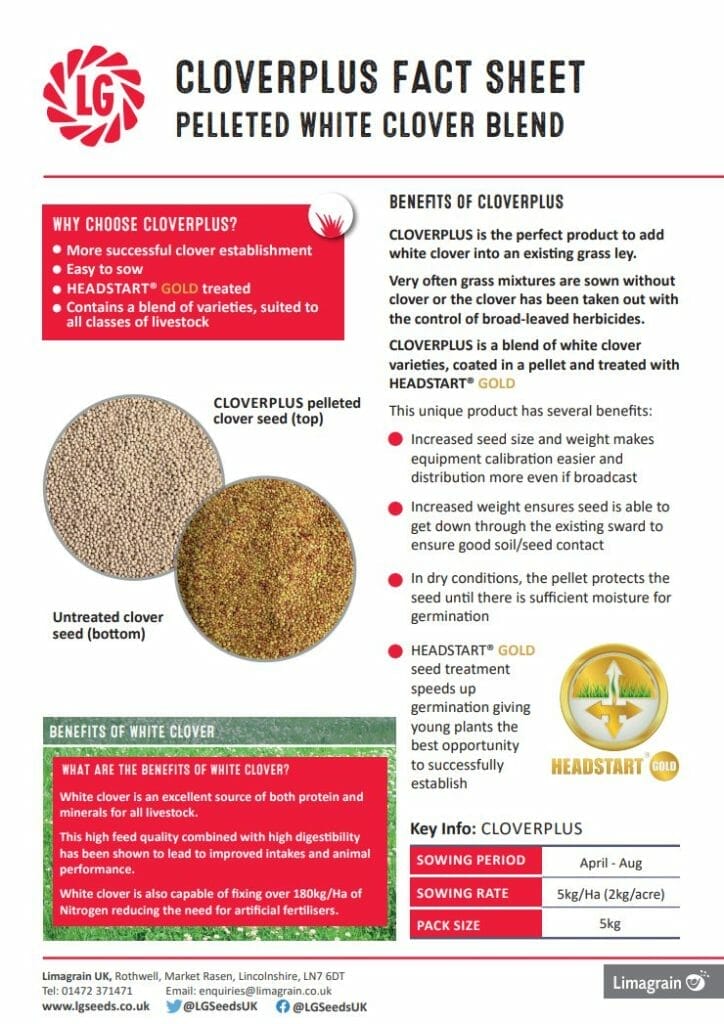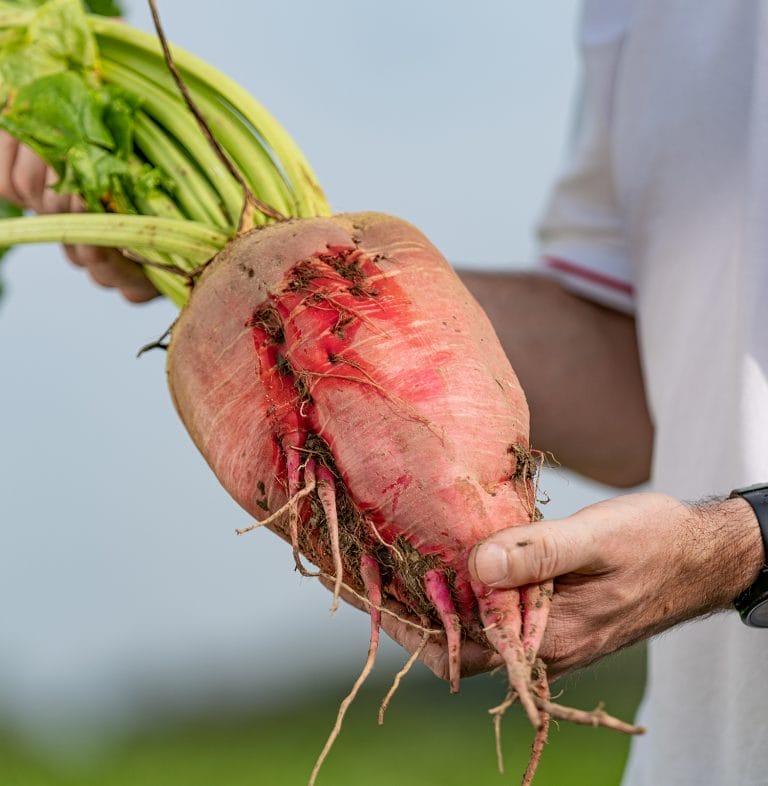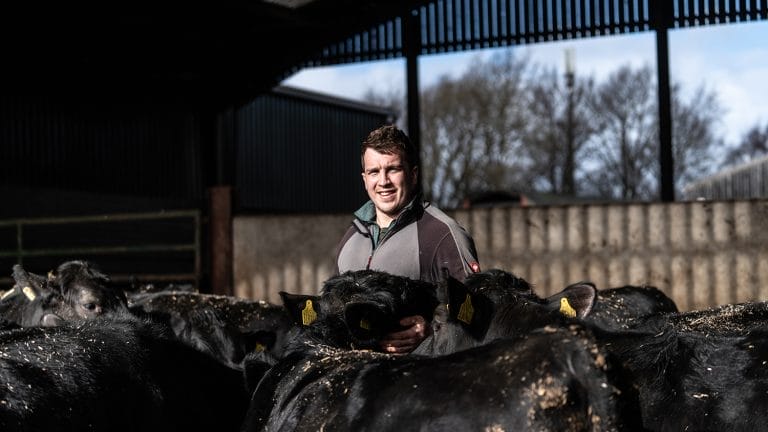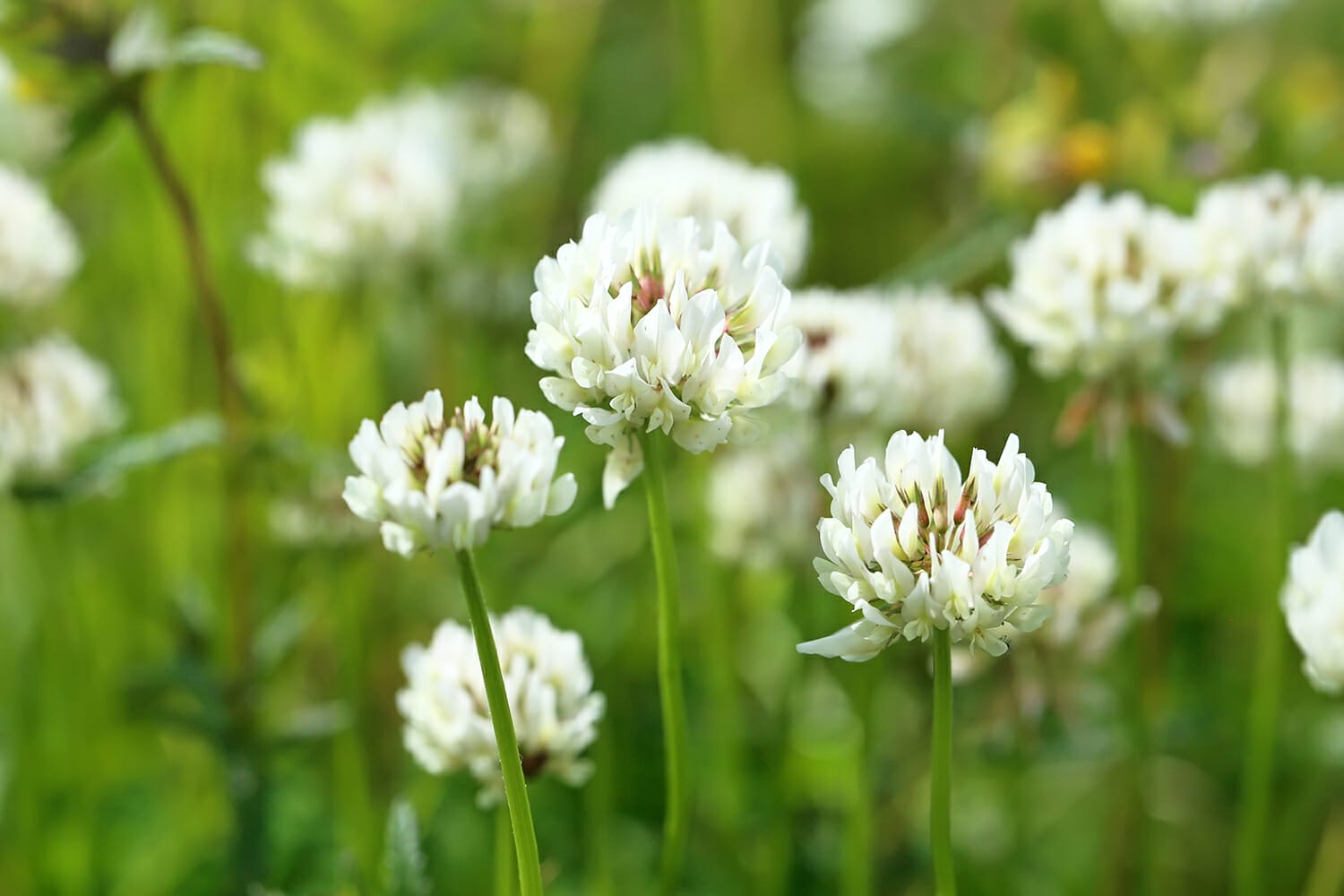
Clover mixes have been in high demand in the past few years. In 2022, Limagrain reported a five-fold increase in demand for its CloverPlus blend.
Forage crop manager John Spence considers this a wise choice, as long as growers adhere to some specific sowing and management ‘rules’ to ensure success.
Few need a recap of the advantages of clover in a grass sward. “Nutritional benefits and nitrogen fixing abilities are big attractions,” says Mr Spence. “Also, its soil health improvement potential and drought resilience add to its benefits.”
He finds it surprising that more farmers and growers haven’t taken advantage of clover until more recent years, particularly as inorganic fertiliser use has been falling on UK livestock farms since the early 1980s.
Nitrogen applications have halved on grassland farms, according to Defra reports, but only 13% of livestock farms include clover in all their leys, and 25% include no clover at all.
“This is surprising when you consider the high protein content of clover and its palatability in grass swards. On farm trials have shown that the D value in grass and white clover swards remains at least 2 points higher than a grass plus nitrogen fertiliser sward throughout the grazing season.”
And clover’s seasonal growth also compliments grass, as shown in Figure 1. It has a deep tap root to withstand drier conditions, so a grass clover sward will have a more even growth pattern through summer.
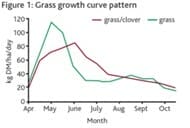
Fig 1
A grass sward with good white clover content can produce as much forage as a grass-only sward receiving 180kg of nitrogen per hectare. “This is equivalent to 520kg of ammonium nitrate fertiliser a hectare and worth about £220 per hectare based on current fertiliser prices of £420/t.”
Red clover is more impressive and can fix up to 250kg of nitrogen per hectare, but even at 200kg per hectare, this is worth £240 a hectare.
White clover is commonly used in grazing leys, though the popularity of red clover in shorter term silage mixtures is growing primarily to increase protein content. Also red and white form a major part of most multispecies and herbal grazing leys.
Mr Spence points out important considerations when sowing clover. “Clover isn’t as vigorous as grass, so it needs careful sowing to promote establishment. The main hurdle is soil temperature. Clover will only grow when soil temperatures are above 8°C, whereas grass will germinate at 5°C. If it’s too cold for the clover, it will be outcompeted by the grass species.”
The combination of needing warmer soil temperature, plus the loss of clover safe herbicides have put growers off using clovers in the past. “Although these issues still remain, an increased focus on soil health and the recent surge in fertiliser prices have seen growers coming back to clover.”
To ensure success, clover is best sown in May or June. It can be oversown into a grass sward that has been cut or grazed tightly, so that competition from the existing sward is minimised.
The ground must be prepared by harrowing to remove any dead thatch, and to ensure good seed to soil contact.
If reseeding is scheduled for late spring, after first cut silage or a first round of grazing, then clover can be included in the grass seed mixture. “But, again, soil temperatures must be high enough and it must be sown into a carefully harrowed fine tilth to speed up its establishment and ensure it can compete with the grasses in the mix.
A biostimulant seed treatment will also help to improve germination.
Clover seed is small, and so has limited energy reserves, making establishment trickier, particularly when sown into the competitive environment of an existing grass sward.
“But establishment rates can be increased significantly (by using a pelleted and treated seed.
“This makes the seed larger and heavier so increasing the likelihood of good soil contact. It also helps to achieve better distribution when the seed is broadcasted, and it is easier to calibrate. Pelleted seed is by far the preferred type of seed for oversowing clover into existing swards.”
Seed choice
There are a range of clover varieties that can be blended to take advantage of the merits of each. White clovers are generally categorised as small, medium or large leaved types.
The smaller leaved varieties are slower to establish and lower yielding but are the most long lasting and persistent under tight grazing. Larger leaved clovers are the fastest to establish and highest yielding but are less persistent.
 “Blends formulated for dairy systems tend to take advantage of the higher yielding medium and large leaved clovers,” he says. “We include 90% medium and large leaved clovers in our pelleted CloverPlus blend and only about 10% of small leaved clover to help increase ground cover and persistency. It also includes the new large leaved New Zealand variety Kakariki which gives exceptional yields.”
“Blends formulated for dairy systems tend to take advantage of the higher yielding medium and large leaved clovers,” he says. “We include 90% medium and large leaved clovers in our pelleted CloverPlus blend and only about 10% of small leaved clover to help increase ground cover and persistency. It also includes the new large leaved New Zealand variety Kakariki which gives exceptional yields.”
Overall, well-managed clovers in the sward will last for the persistency of the mixture. “White clover is very persistent and if correctly managed would last longer than many mixtures,” adds Mr Spence.
“Red clover will last three to four years and so is usually paired with grass species that last the same amount of time. For example, a grass and red clover mixture would tend to include high a proportion of hybrid ryegrass.”
Even at lower fertiliser prices, Mr Spence believes the increase in demand for clover will continue. “Persistency in drier conditions, nitrogen-fixing properties and soil health benefits as well as feed value are high on the radar for dairy farmers going forward,” he says.
Environmental schemes such as SFI are also encouraging the use of clovers, either as part of a legume rich sward, or as a tool for managing grassland with low nutrient input.
“There’s a lot of work going on behind the scenes among seed breeders too, to boost the yield and persistency of clovers, and there are new improved varieties out every year.
“I’d encourage livestock farmers to give it a go, or to introduce more clover if it’s an option, and if the guidelines are followed for ensuring good establishment, the crop will bring many benefits to animal production and to the sustainability of the system.”
Find out more
To download the CloverPlus fact sheet, click here






























 To ensure success, clover is best sown in May or June. It can be oversown into a grass sward that has been cut or grazed tightly, so that competition from the existing sward is minimised.
To ensure success, clover is best sown in May or June. It can be oversown into a grass sward that has been cut or grazed tightly, so that competition from the existing sward is minimised.